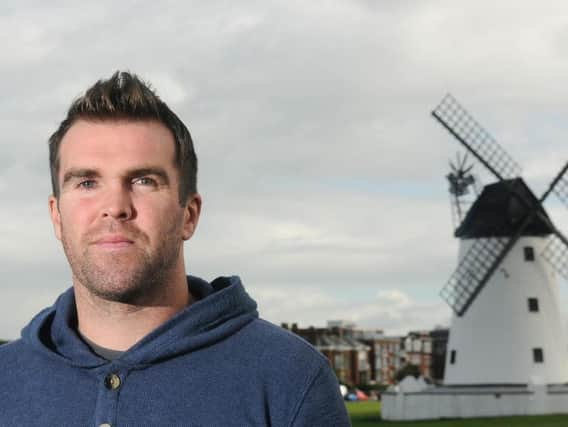Ben Burgess column: Strength in depth is Blackpool's big weakness


They were always going to be facing an uphill battle in their two Lancashire derbies.
The game last Saturday against Fleetwood Town was completely ruined by the awful weather conditions and a point was probably a fair result.
Advertisement
Hide AdAdvertisement
Hide AdBlackburn Rovers on Tuesday night was an altogether tougher proposition. Rovers entered the game on a run of five wins from their last seven outings and they didn’t disappoint at Bloomfield Road.
Blackpool were missing key men Curtis Tilt, Kyle Vassell and Mark Cullen.
I was doing the commentary for Radio Lancashire at the game, so I could see how much of an impact the absence of Tilt and Vassell in particular had on the Seasiders’ performance.
Rovers started the game strongly and forged ahead when speedy winger Marcus Antonsson capitalised on a weak back-pass from stand in centre-half Kelvin Mellor.
Advertisement
Hide AdAdvertisement
Hide AdBlackpool did rally and once they equalised they looked the better side.
Unfortunately, more woeful defending led to a goal for the highly impressive Bradley Dack.
The second-half threatened to be a riot as Rovers, led by the peerless Charlie Mulgrew, created chance after chance and eventually raced into a 4-1 lead, although Danny Philliskirk did pull one back with a neat finish.
I actually enjoyed the game as a spectacle and both sides tried to play some attractive football.
Advertisement
Hide AdAdvertisement
Hide AdThe main difference between the squads (at the moment) is the strength in depth.
Blackpool cannot replace their key players, while Rovers had a bench consisting of seven players who would probably have got into the Seasiders’ starting 11.
That’s why the bigger spenders – such as Wigan Athletic, Rovers, Bradford City and Charlton Athletic – find themselves in the top six.
On the subject of those injuries to Tilt, Cullen and Vassell that I mentioned earlier, they are all hamstring tears or strains.
Advertisement
Hide AdAdvertisement
Hide AdUsually when a club has many injuries of a similar nature there is an underlying issue that is causing it.
During my time at Hull City, we had about four or five serious knee injuries in the space of 12 months.
This is where sports scientists usually come to the fore with their analysis of the players conditions, their distance statistics, muscle strength and countless other aspects of performance that they can crunch in their computers.
Even towards the end of my career, I was seeing these statistics coming into play.
Advertisement
Hide AdAdvertisement
Hide AdWe would have tests to ascertain our flexibility, leg strength, VO2 max, sprint times etc.
These would be used as a baseline to see how ‘fit’ a player is as the season progresses.
Many clubs now use prehab as part of their daily training sessions.
Prehab is all about being pro-active in strengthening the areas most often affected by injury before they are injured, unlike rehab which is strengthening that is undertaken post-injury.
Advertisement
Hide AdAdvertisement
Hide AdPrehab is what you see when players are warming up with ‘clini bands’ (rubber bands) around their legs.
Many players will also have their own strengthening/injury prevention workout to perform before training and matches.
How often they perform these mundane exercises usually has a direct correlation to how much time they spend on the pitch.
That’s why Ryan Giggs played Premier League football in his 40s.
Advertisement
Hide AdAdvertisement
Hide AdHe was a big advocate of yoga and pilates and would spend hours stretching.
In the twilight of my career, I had an intense strengthening, mobility and stretching programme that would last 45 minutes.
I had to do that in order to be in any state to even start training.
I was the same at half- time. If I sat still for 15 minutes my knee would stiffen up, so I either had my legs in the air while I lay on my back or I would be gently cycling an exercise bike while the manager did his team-talk.
That was certainly a surreal experience.